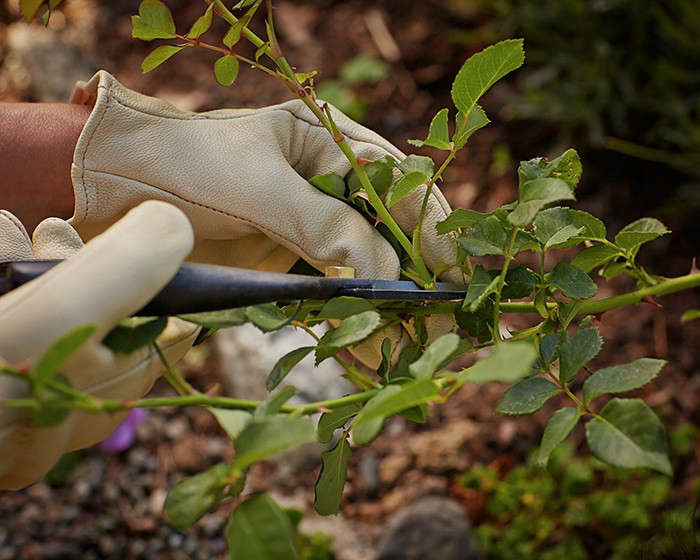August is the month when the garden is gloriously overflowing, when zucchinis and tomatoes are plotting a take-over, and when perennials and annuals are enthusiastically rubbing elbows with their neighbors. It’s also the time when some plants suddenly appear tired and a bit sunburnt. That’s why now is when you should put on your wide-brimmed hat and head out to the garden to tackle some tasks to ensure your plants stay healthy and strong through the tail end of summer and successfully transition to the tamer fall months.
Here are a handful of garden chores to do now for lasting results.
Much about Mulch

Time to check on the well-being of your mulch to see if it has decomposed or scattered away. You don’t want bare soil this time of the season because it invites more competing weeds. So consider adding a healthy layer of fresh mulch to needed areas. Compost is also a smart choice to add as a top layer; it adds nutrients and helps control moisture evaporation.
Trim Time

Prune back spent summer flowers now so that energy can be used to encourage more flowers and strong root and leaf growth. Also, give your early blooming plants, like geraniums, a good haircut so that they can have a second flush of fresh foliage.
The Need for Seeds

Resist the temptation to prune back all spent annual flower heads that have gone to seed, especially ones that you want to reseed willy nilly style around your garden. Top choices to let self-sow are cosmos, nigella and calendula. Also remember to save the seeds of certain hard-to find or top-performing plants that you want to grow again next year. And let’s not forget our bird buddies who will appreciate the seed buffet you’ve graciously left for them, seeds from sunflowers, coneflowers and rudbeckias.
Divide and Conquer

Time to get out the sharp spade or pitchfork and divide certain perennials that you noticed have waned in their flower production. Good examples of plants that need this treatment are agapanthus, bearded iris, and daylilies. By starting the division and replanting process now, you can get them situated and acclimated to their new spot before they face winter.
Disease Detective
Carefully inspect all plants and remove any dead, dying or diseased leaves and stems so that any nasty bacteria or fungus doesn’t spread or any infected parts fall to the ground and incubate.
Citrus Care

After you’ve harvested your last crop, remember to reward these heavy feeders for all their tasty production by giving them some organic fertilizer. Tip: Choose one specially formulated for citrus trees.
Fall Fantasy

Begin planning your fall vegetable garden now. Consider adding peas, chard, broccoli, cabbage, lettuce, brussel sprouts, celery, kale, and collards. Also embrace the concept of crop rotation by remembering to avoid re-planting the same type of plant in the same area two seasons in a row. Doing this helps prevent the build-up of soil-borne diseases and pests as well as the depletion of soil nutrients.
Herb Hour

Cut back herbs to refresh growth and to harvest and dry for use later. Herbs that might need some extra attention right now are notoriously enthusiastic mint, oregano and thyme.
N.B.: This post is an update; it was first published August 2019.
More Gardening 101 stories below:
- Gardening 101: How to Use Eggshells in the Garden
- Your First Garden: The Free Mulch You May Already Have on Your Property
- Your First Garden: 5 Reasons to Pull Up a Plant












Have a Question or Comment About This Post?
Join the conversation (0)